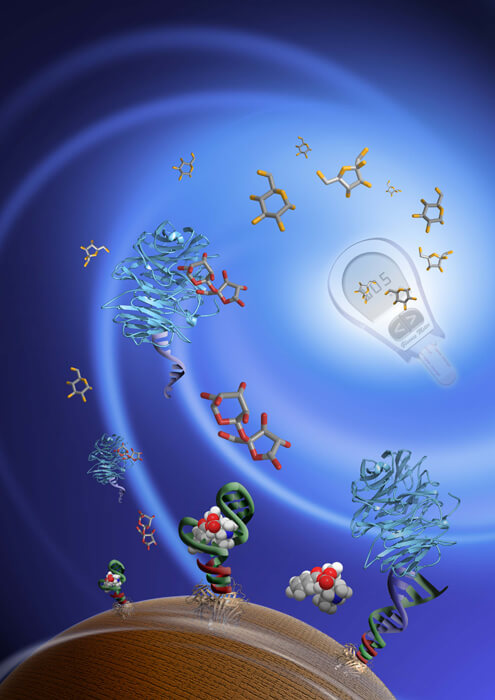Sugar meters are no longer just for diabetics. Thanks to chemists from the University of Illinois, they can be used as simple, portable and cheap measuring devices for several target molecules found in blood, serum, water or food.

Sugar meters are no longer just for diabetics. Thanks to chemists from the University of Illinois, they can be used as simple, portable and cheap measuring devices for several target molecules found in blood, serum, water or food.
"The advantages of our method are high portability, low cost, wide availability and quantitative detection of a variety of targets for medical diagnosis and environmental monitoring," says the lead researcher. "Anyone will be able to use our device for a variety of detection types of chemical targets that should be noticed at home and in the field, such as the nutrients necessary for a healthy life, contaminants in drinking water or food, or for detecting potential disease markers."
A glucometer is one of the only available and common devices capable of quantitatively detecting target molecules in a solution, a necessary characteristic for diagnosis and detection, but normally it reacts to one chemical: glucose. In order to use it to detect another target, the researchers combined a family of molecular sensors called functional DNA sensors. These sensors use short segments of DNA that bind to specific targets. A number of such DNA and RNA sensors are commercially available and are used to detect a wide variety of targets. These sensors are in laboratories, but there they are integrated into more complex and expensive equipment, but the researchers recognized the potential of combining them with manual sugar meters.
The DNA segments, anchored to magnetic particles, are linked to the enzyme invertase, an enzyme responsible for the conversion of sucrose (table sugar) into glucose. The tester adds a sample of blood, serum or water to the functional DNA sensor to test for the presence of drugs, disease markers, pollutants or other molecules. When the target molecule binds to the DNA, the enzyme invertase is released into the solution. After the magnetic particle is removed using an external magnet, the level of glucose in the sample rises depending on the amount of enzyme released, so that the tester can then activate the glucose meter to quantify the target molecule in the original sample.
"Our method significantly expands the range of targets that the glucose meter is able to detect," explains the lead researcher. "The device is simple enough that anyone can use it at home, without high costs and without a long waiting time that requires visiting clinics or sending the samples to laboratories that specialize in this."
The researchers demonstrated the use of functional DNA combined with a glucose meter to detect cocaine, the disease marker interferon, and the molecules adenosine and uranium. The method, which consists of two steps, is able to detect any type of molecule that binds to DNA or RNA.
In the next step, the researchers intend to make their method even simpler and eliminate the current need for the examiner who is currently required to insert the sample into the functional DNA sensor and only then measure the sugar. "We are now working on unifying the two procedures into one step in order to make the device simple."
The research findings were published in the scientific journal Nature Chemistry.
